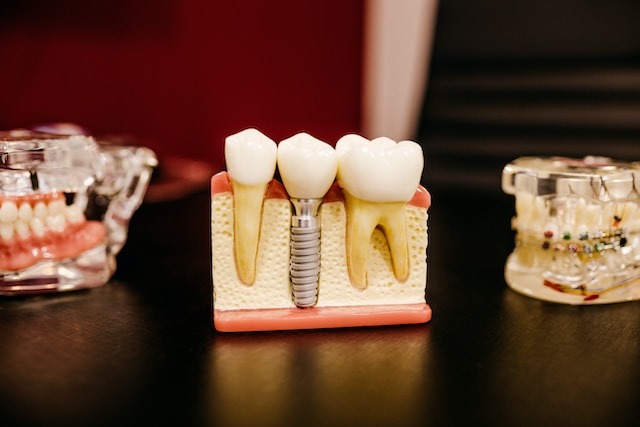Dental implants are a relatively new and constantly evolving science. Implants exist in different designs, shapes, and sizes. Also, different companies propagate their own.
Let’s look at the different types of implants, from endosteal implants (popularly used) to basal implants (that rely on the horizontal dimension of the ball) to implants classified based on the shape of the surface.

Basic Types Of Implants?
Endosteal and subperiosteal are the most popularly known and used types of?implants. The primary difference between them is their mode of attachment to the jawbone.
Endosteal Implants
Endosteal implants (also called “in-the-bone” implants) are the most common type of dental implant. They have three main parts: the dental prosthetic, the implant, and the abutment.
They occur in different shapes, from blade, cylinder, or small screw, and are directly and surgically implanted into the jawbone. The implants are typically made of titanium?but can also be ceramic. They usually resemble small screws.
The dental prosthetics cement onto the abutment.
Once installed, the surrounding gum tissue must heal first (healing takes three to four months). Afterward, the doctor performs a second surgery and connects a post to the first implant.
Afterward, they attach an artificial tooth (or teeth) to the post. Depending on the number of missing teeth, this attachment can be grouped (on a bridge or denture) or done individually.
Doctors may also recommend endosteal implants for patients already using bridges and dentures.
Subperiosteal?
Subperiosteal implants (“on the bone” implants) get designed to sit beneath the gums but just above the jawbone.
Usually, a doctor recommends subperiosteal if the patient natural jawbone isn’t healthy enough to support endosteal implants. Or if they don’t feel like having a bone augmentation to restore their jawbone. Otherwise, some may avoid using regular dentures? removable artificial teeth.
Because they cannot get placed into the bone, the subperiosteal structure greatly differs from the endosteal structure.
They feature metal frames (instead of an implant screw) that can fit onto the jawbone?below the gum tissue.
The metal frame involves a series of posts added to support dental prosthetics such as dentures, bridges, and crowns.
The frame fixes to the jawbone progressively as the gums heal. Later, posts (held in position by the frame) protrude through the gums. Doctors can then mount artificial teeth onto the posts.
Mini Dental Implants
Mini dental implants are relatively smaller compared to regular implants with the same physical structure. They feature a one-piece screw?less than 3mm in diameter with a ball-shaped end that can protrude above the jawbone. Lastly, their placement technique is less invasive. That means they require less time (one sitting) to install with the help of local anesthesia, unlike conventional implants.
Here are occasions where mini dental implants are suitable:
- Busy schedule to indulge in repeat dental visits
- Inability to undergo invasive surgery
- Your jaw lacks enough bone for a full-sized implant
Ready to Get Started?
Transform your teeth today for a new smile using dental implant restoration. Contact a top dental implant dentist, a skilled and caring team. They can guide you and help you pick the best dental implant option.
Hey welcome to my blog . I am a modern women who love to share any tips on lifestyle, health, travel. Hope you join me in this journey!

Speak Your Mind